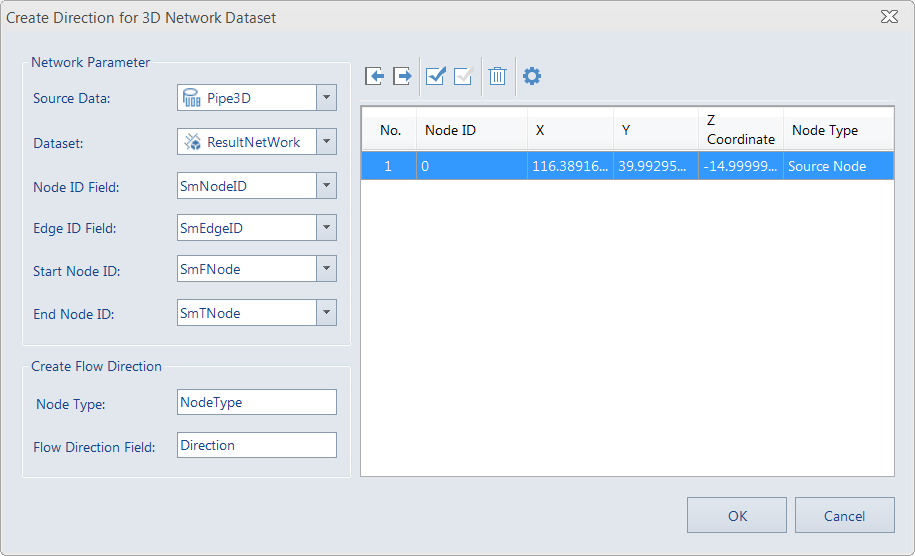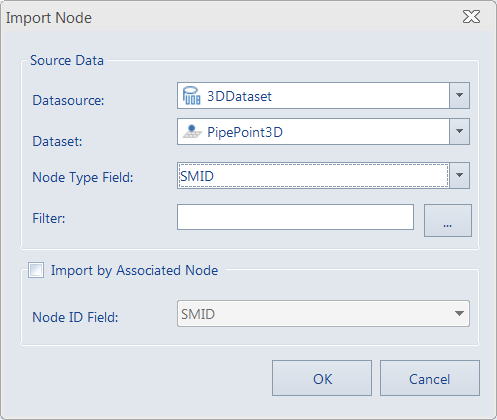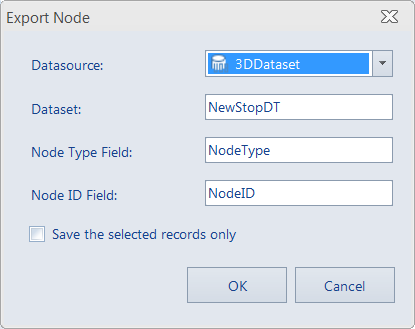Create Flow Direction
 Introduction
Introduction
Builds the direction for the 3D network dataset according to the locations of the specified source and sink. The flow direction field is calculated according to the sink information field. Only the 3D network dataset that has created the direction can perform the facility network analysis.
 Basic Steps
Basic Steps
- In the Environment Settings dialog box, click Create Flow Direction, click Build Direction for 3D Network to display Create Direction for 3D Network Dataset, as shown below:
- In the Create Direction for 3D Network Dataset dialog box, select the 3D network dataset for flow creation, and set the Node ID Field, Edge ID Field, Start Node ID, and End Node ID for the network dataset.
- In the Create Flow Direction section, set name for node type field and flow direction field. The default name for the generated node type field is NodeType, used to store the type of the imported nodes. The value 0 represents normal node, 1 represents source point and 2 represents sink point.
- Click the
 Import button on the toolbar to the right to display the Import Node dialog box, in which you can set parameters for importing sources and sinks.
Import button on the toolbar to the right to display the Import Node dialog box, in which you can set parameters for importing sources and sinks. - After importing successfully, you can directly click Node Type column to modify the node type of each node. Normal point, source and sink are supported. The default node type is source.
- Click the node record in the node list to locate to corresponding node and the node will be highlighted in the scene.
- The toolbar in the Create Direction for 3D Network Dataset dialog box provides commonly used functions for operations on sources and sinks, such as import and export sources and sinks, select all, select inverse, delete and uniform setting of node type.
- After parameter settings, click OK to create flow for 3D network dataset.
 |
| Figure The Create Direction for 3D Network Dataset |
 Note
Note
- While creating flow direction, river classification field and loop settings are not supported.
- If the current network dataset has only one child network, network dataset flow direction can only be calculated by one source and one sink; if the current network dataset has multiple unconnected child networks, the network flow direction can be calculated by multiple sources and sinks.
 Toolbar Introduction
Toolbar Introduction
